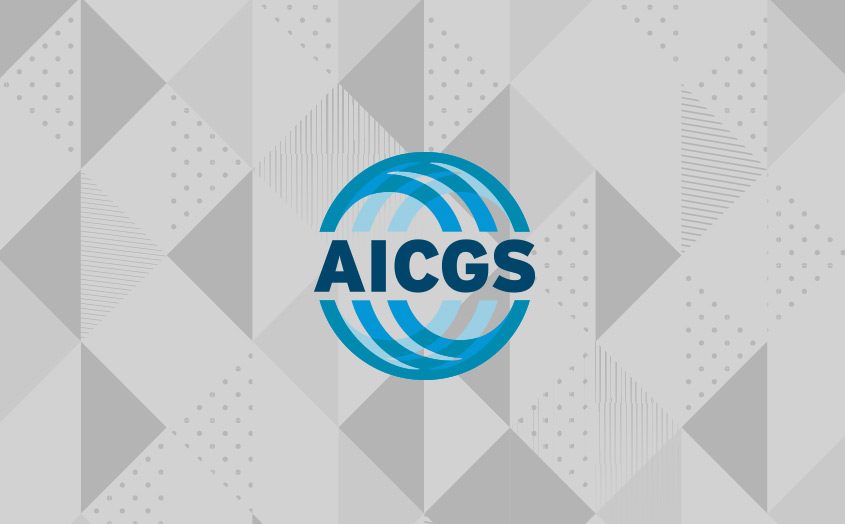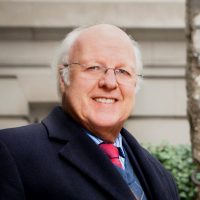
October 3: Lessons for the Future of Europe

Jackson Janes
President Emeritus of AGI
Jackson Janes is the President Emeritus of the American-German Institute at the Johns Hopkins University in Washington, DC, where he has been affiliated since 1989.
Dr. Janes has been engaged in German-American affairs in numerous capacities over many years. He has studied and taught in German universities in Freiburg, Giessen and Tübingen. He was the Director of the German-American Institute in Tübingen (1977-1980) and then directed the European office of The German Marshall Fund of the United States in Bonn (1980-1985). Before joining AICGS, he served as Director of Program Development at the University Center for International Studies at the University of Pittsburgh (1986-1988). He was also Chair of the German Speaking Areas in Europe Program at the Foreign Service Institute in Washington, DC, from 1999-2000 and is Honorary President of the International Association for the Study of German Politics .
Dr. Janes is a member of the Council on Foreign Relations, the International Institute for Strategic Studies, the Atlantic Council of the United States, and American Purpose. He serves on the advisory boards of the Berlin office of the American Jewish Committee, and the Beirat der Zeitschrift für Außen- und Sicherheitspolitik (ZfAS). He serves on the Selection Committee for the Bundeskanzler Fellowships for the Alexander von Humboldt Foundation.
Dr. Janes has lectured throughout Europe and the United States and has published extensively on issues dealing with Germany, German-American relations, and transatlantic affairs. In addition to regular commentary given to European and American news radio, he has appeared on CBS, CNN, C-SPAN, PBS, CBC, and is a frequent commentator on German television. Dr. Janes is listed in Who’s Who in America and Who’s Who in Education.
In 2005, Dr. Janes was awarded the Officer’s Cross of the Order of Merit of the Federal Republic of Germany, Germany’s highest civilian award.
Education:
Ph.D., International Relations, Claremont Graduate School, Claremont, California
M.A., Divinity School, University of Chicago
B.A., Sociology, Colgate University
Expertise:
Transatlantic relations, German-American relations, domestic German politics, German-EU relations, transatlantic affairs.
__
This week Germany again marks its anniversary of formal unification on October 3.
Next month, on November 9, we will remember how the division of Germany ended, seeing dramatic pictures of jubilant people sitting atop the Berlin Wall twenty-five years ago.
A quarter century has passed by in the blink of an historical eye. Germans born in 1989 grew up taking for granted the normal status of a united nation. They have to be shown where the Wall once stood. Where tanks once faced each other across the front line of the Cold War, traffic and stop lights are the only obstacles to moving through Berlin.
Each time these annual milestones come around, some might still focus on how it all happened so quickly in that fall of 1989. It was only two years earlier that the top official of the German Democratic Republic (GDR), Erich Honecker, was welcomed in Bonn by then Chancellor Helmut Kohl. The two German States had been living side by side for almost four decades and most Germans on either side of the Wall likely expected that situation to continue for many years to come. While the government of the GDR was constantly pressing for full recognition as a sovereign state, Bonn remained committed to the goal of unification as stated in its Basic Law. But that had not deterred either side from exploring forms of a modus operandi to negotiate with each other under the conditions of the Cold War framework.
And then came the earthquakes that began to change the landscape not only in East Germany, but next door in Poland, in Hungary, and of course in the Soviet Union. We are still studying how the political tectonic plates moved so quickly throughout Eastern Europe, how some political leaders struggled against them and others ran quickly to keep up with them. And we still are trying to extract lessons from those experiences twenty-five years later.
What might some of them be? Surely one is never to underestimate the power of people striving to have the freedom of their own choices. The courage of those who stood steady in the streets of Gdansk, Leipzig, Dresden, and elsewhere throughout Eastern Europe-reaching all the way to Moscow-was the metal behind that change.
Another lesson is that the struggle is not without pain and patience, sacrifice and shortcomings, false steps and sometimes false leaders. Once achieved, defending the parameters of freedom never stops. The battles today in Ukraine, the disturbing trends in Hungary, and the threats emerging in Moscow remind us not to take anything for granted. That same lesson was learned when what was thought to be a permanent division of Germany dissolved amid the marches of people who finally refused to accept it.
The ripples of 1989 changed the contours of Europe. Those changes unleashed the power of people wanting to live their own lives. There was also a melting of the snow over frozen conflicts, revealing hidden rifts and indeed deep scars. Yugoslavia dissolved into war, Czechoslovakia went through a national divorce, borders- ethnic and religious-reemerged as new divisions just as Europe was seeking to redefine itself as a project and as a promise that it could become greater than its parts.
And much has been accomplished. Just as Germany has rewoven its linkages as a country, the larger map of Europe now reflects a community of nations unlike it has ever seen. In both cases, there has been a commitment to building a shared union-perhaps one that can serve as a model for other parts of the globe.
But there remain serious gaps between the ends and the means of that union. The aspirations of unity are not seamlessly matched by the tools to achieve it, be it in the economic, political, or social dimensions of Europe today.
Amid that challenge, Germany, a quarter century after its long sought unification, emerged as the strongest power in Europe. Once the object of a Cold War stand-off, Germany is today the subject of Europe’s present and future. Germany has struggled with assuming that role, conscious of its past and still aware of its unavoidable responsibilities. The speech given by Federal President Joachim Gauck earlier this year described that challenge.
Europe also faces the challenge of answering a fundamental question about its future: how much unity and how much diversity does Europe need? In his new book, World Order, Henry Kissinger warns that “Europe…is in danger if cutting itself off from the contemporary quest for world order by identifying its internal construction with its ultimate geopolitical purpose…Europe thus finds itself suspended between a past it seeks to overcome and a future it has not yet defined.”
During the more than forty years of Germany’s division, Germany was also suspended in the face-off between East and West, until that revolution of change occurred in 1989 and opened new options. Germany then spent many years reconstructing itself at home and on the foreign policy stage. At times it was hesitant, uncertain of its path forward. The economic burden of rebuilding the east still has not ended. And yet, it has clearly developed into a leader in partnership not only with its European neighbors but also with many other global players. That role comes with hard choices such as the decision to engage in dealing with war in the Balkans, the threat of terrorism, serious economic recessions, and now a major challenge from aggression from Russia. It also comes with hard choices at home in sustaining the political, social, and economic standards it set for itself, and with carrying responsibility for those in Europe who are impacted by Germany’s decisions. That comes with both kudos and criticisms, as anyone in Washington can attest.
Few would have imagined all this twenty-five years ago. But few would not have wanted Germany to become what it is today.







